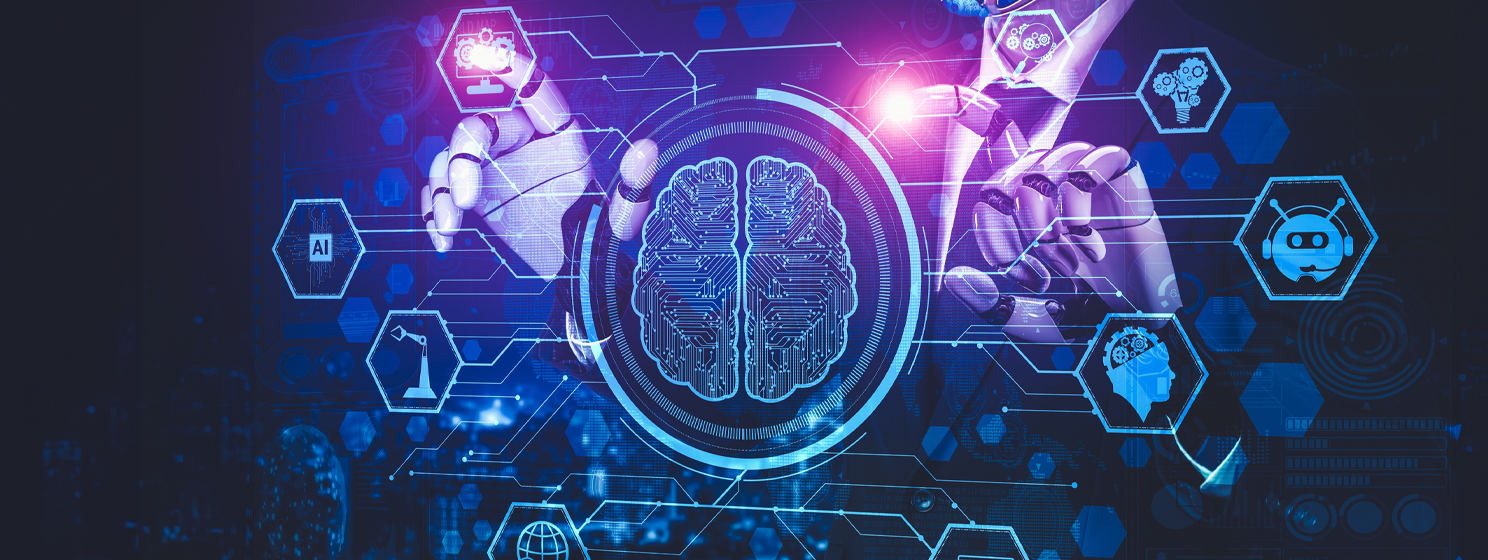|
Getting your Trinity Audio player ready...
|
This post is a guest contribution by George Siosi Samuels, managing director at Faiā. See how Faiā is committed to staying at the forefront of technological advancements here.
TL;DR: Decentralized AI networks like Sahara and CARV are sketching a new substrate that fuses Web3’s sovereignty with machine learning’s expressiveness. I’ve been thinking that the real shift isn’t about re-splitting control so much as reengineering alignment, attribution, and coordination so intelligence itself becomes composable and accountable. Maybe that’s the part we’ve underweighted until now.
- The rise of decentralized intelligence
- Anchoring AI agents, models on-chain
- CARV’s shift to evolutionary AI agents
- Pillars of decentralized intelligence
- Decentralized AI in practice
- When AI autonomy meets on-chain risk
- Mapping the agent economies
- Conclusion
Why decentralized AI networks matter now
Centralized artificial intelligence (AI) platforms still dominate the frontier and tend to lock in access, gate model upgrades, and absorb surplus from data and model providers. That consolidation bottlenecks innovation and concentrates power, which keeps bringing us back to questions of privacy, ownership, and accountability.
Lately, though, the stack feels different. On one axis, cryptographic primitives, verifiable computing, zero-knowledge proofs (ZKPs), and decentralized consensus have matured. On the other hand, large language models (LLMs), agents, and foundation models are changing what “intelligence” looks like. The convergence invites a different substrate: decentralized AI networks where models, datasets, compute, identity, and incentive live on-chain or in hybrid form.
In that world, AI is less a service you rent and more an asset you engage with. You build, own, license, and evolve models under rules of provenance and reward, while the infrastructure itself holds trust, attribution, and incentive alignment. Framed this way, projects like Sahara and CARV read as early proofs that communities and contributors can cooperate, compete, and specialize without being absorbed by a single gatekeeper.
What Sahara brings: From data to agents
Sahara positions itself as an AI‑native blockchain aiming to democratize the full lifecycle: data collection, model training, inference, licensing, monetization, and agent construction. The idea is to encode “AI assets” such as datasets, models, and agents with metadata for attribution, versioning, licensing, and access rules, anchored on-chain so claims are auditable over time.
Because large models and datasets won’t live fully on-chain, Sahara leans into a hybrid split where identity, permissions, and licensing are anchored on-chain while heavy compute and inference happen off-chain under verifiable protocols. In practice, that opens room for a collaborative economy where data labeling, training, inference, and agent orchestration are rewarded via tokenized flows. The longer arc is an agent ecosystem, with multi‑agent modules and marketplaces where intelligence can evolve rather than sit static.
I’m drawn to the way Sahara stitches identity, licensing, and monetization across the stack because it lowers the barrier for smaller teams or independent researchers to contribute and actually own model IP. The modularity helps too: composable models and agents with clear provenance and version control invite reuse. Still, there are tradeoffs that we shouldn’t gloss over. Off-chain compute has to be verifiable, and truly trustless verification of training or inference is hard. Token design can skew incentives if it rewards speculation over contribution.
Adoption will likely be bumpy because asking developers and enterprises to shift substrates is nontrivial. And once you add multi‑agent orchestration across nodes, latency and coordination overhead become real design constraints. Maybe that’s okay if we treat the early cycles as experiments with tight feedback, but it’s a live question how quickly the loop can close.
CARV’s vision: Agents growing up on-chain
CARV, which grew out of a Web3 data coordination effort, has been pivoting toward agent economies—“AI Beings” with memory, identity, behavior, and economic agency native to its chain. The roadmap flows from a genesis layer for identity and memory, into on-chain learning where agents adapt behavior using staking signals and governance votes, and then toward convergence phases where agents coordinate, delegate, and compose services. The interesting part for me is how learning loops get embedded into consensus, so agents accrue persistent memory and reputation rather than resetting each call. That creates the conditions for agents to become service nodes that evolve over a lifecycle, where communities can actually own lineages and contribute to their evolution.
There are unknowns. Safety and oversight become first‑order concerns when autonomous agents can touch assets on-chain. Combining reinforcement learning with governance signals at scale is still experimental. Emergent behavior may drift or collude in ways we don’t anticipate. And even the basics—like validating an agent’s claimed memory or behavior—need stronger primitives. Still, the direction feels like a nudge from “models you query” toward “entities you engage,” which might be the point if we want intelligence with accountable history and incentives.
A composite lens: What to watch through a discerning framework
When I evaluate decentralized AI networks, three axes keep showing up. First is alignment and governance. Intelligence wants boundaries, feedback constraints, and error correction loops, which means the network needs oversight, dispute resolution, revocation, and adaptation built in. If agents are going to evolve, the governance has to evolve alongside them rather than ossify. Second is provenance and attribution.
A core promise here is that contributors are named, rewarded, and tracked. That probably means granular attribution down to data points or gradients and licensing modes that allow reuse and derivatives while preserving credit. Without that connective tissue between incentives and trust, the economy collapses into vibes. Third is composability and interoperability. No single chain will host all models or agents, so cross‑chain bridges, federated protocols, and shared interfaces matter. If Sahara, CARV, and others can enable agents to talk, barter, and interoperate, isolated networks start to look like an emergent intelligence fabric instead of silos. I keep coming back to modularity too—splitting an agent into brain, suffix, memory, toolchain, and inference modules so pieces can swap across networks without breaking identity.Use cases where decentralized AI moves from theory to impact
The most tangible examples show up where ownership, provenance, and portability change the shape of adoption. I’m imagining personalized agents that know your preferences, schedule themselves, negotiate contracts, or even trade assets, but remain something you can audit, port, and benefit from if others build derivatives. In data marketplaces, domain experts could release healthcare, climate, or cultural datasets with transparent royalties, version tracking, licensing, and collaborative validation, which feels closer to science than today’s walled gardens. In multi‑agent protocols for finance, supply chain, or decentralized autonomous organization (DAO) governance, agents that can compose, negotiate, and self‑organize across domains might reduce coordination tax while keeping accountability on-chain.
Federated learning and edge AI could let devices resist central collection while still building shared models, preserving local sovereignty without losing network effects. And for AI‑powered infrastructure, decentralized compute and models serving as microservices might finally make “no single cloud lock‑in” a default rather than a slogan. Across these domains, the common thread isn’t just distributed compute. It’s the architecture for trust, provenance, and ownership that makes contribution and reuse feel worth it.
Risks and hard problems we should confront
Verifiable compute remains a knot: how do we prove an agent performed the claimed logic on private data without leaking it? ZKPs, attestations, and trusted enclaves each come with costs and assumptions. Economic capture is another edge. If token mechanics encourage rent extraction or front‑running over contribution, the substrate will centralize in different clothes. Safety and auditing deserve more attention, especially where agents can hold wallets or trigger on-chain actions; I keep thinking about behavioral constraints, kill switches, reputation decay, and external audits as minimum scaffolding.
Governance will need to be adaptive as agent capability grows. Static rules won’t be enough, and I can imagine governance that itself becomes an AI‑assisted layer to calibrate between rigidity and drift. Adoption and migration will also be slow without strong interoperability, bridge tooling, and early “why switch?” wins. And then there’s scalability and latency, because coordinating agents across nodes or chains adds overhead that users will actually feel. Maybe the practical answer is to design with humility: treat deployments as experiments, build in observability and redress, and iterate with tight loops.
Toward a roadmap of signals
If you’re tracking this space, some signals feel like leading indicators. Agent marketplaces would move us beyond model stores toward autonomous agents you can license, evolve, and trade. Cross‑agent protocol standards for identity, messaging, memory exchange, and tool delegation would lower friction for collaboration. Verifiable inference and zero‑knowledge AI would let nodes verify results without exposing internal state.
Composable agent clusters or “teams” would make delegation and emergent workflows practical. Tighter coupling between DAOs and governance layers with agent behavior could turn feedback into actual policy updates. Bridges and federated intelligence frameworks would unlock cross‑chain mobility for agents and shared training without centralization. And open safety and audit frameworks for behavior analysis, anomaly detection, and coordinated kill switches would make the whole thing feel less like a leap of faith and more like an engineered system. Taken together, those signals separate momentary hype from substrate shifts that last.
Closing reflection
Web3 promised sovereignty over identity, capital, and infrastructure, but intelligence has mostly sat outside that frame. Decentralized AI networks are an attempt to fold intelligence into the same sovereign substrate, asserting that models, agents, data, and logic deserve the composability, attribution, and accountability we already expect from tokens and contracts.
The task isn’t to bolt AI onto a blockchain. It’s to recalibrate how intelligence evolves, how it is rewarded, and how it is audited, which asks for a meta‑architecture of trust, agent composability, and governance that learns rather than freezes. If we get this right, the future won’t be a handful of giant providers but a distributed tapestry of agents, models, and modules that co‑evolve and interoperate, owned by the many rather than the few. Still processing, but the direction feels less about control and more about resonance—and the frontier may already be here.
Watch: AI is for ‘augmenting’ not replacing the workforce

 12-09-2025
12-09-2025 





